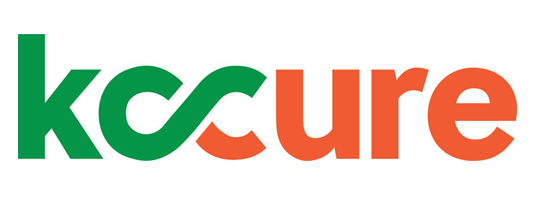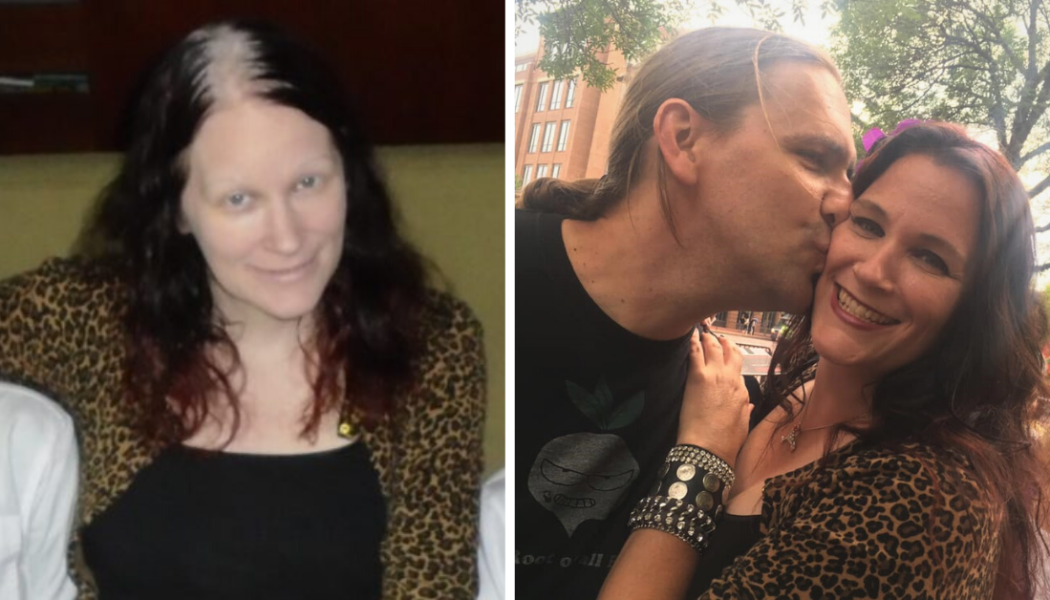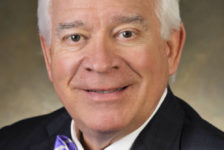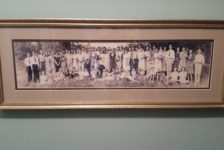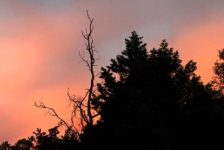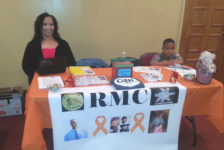In June 2017, I went to the hospital for a kidney stone and left with a diagnosis of stage 1 clear cell renal cell carcinoma. Two weeks later, I had a full nephrectomy and was told that because I was healthy, young, and had never had a health problem—not so much as a cholesterol number out of line—I’d likely never have to worry about kidney cancer ever again.
Sadly, that nephrectomy was a beginning, not an end. On Dec. 27, 2017, a month shy of my first post-surgery follow up CT scan, the cancer had returned. I was declared metastatic, with a heavy tumor burden. An egg-sized tumor had grown in the spot where my kidney once was, along with three grape-sized spots on my liver and a handful of nodules on my diaphragm. Honestly, as much as I or my family didn’t want to admit it, my prospects were not good. No one, not even my perpetually optimistic mom, thought I’d be sitting here today writing this.
By the time I started treatment in January 2018, I was seriously ill, losing weight quickly, barely able to stand up and walk ten steps without getting dizzy. The cancer made me feel like I had a never-ending flu. I was nauseated and unable to eat. I lost forty pounds in the first five months. Most of those were pounds I didn’t have the luxury of losing.
My first treatment was cabozantinib. It worked. My first scan showed slight tumor shrinkage, but like all treatments, it came with a price. Mouth and foot sores, nausea, aversion to food, which no longer tasted good. My blood pressure rose higher and higher, and my hair even turned completely white. I was so exhausted, I slept 18 hours at night, then had to nap for an hour for every hour I was awake.
I didn’t know it then, but I was on the verge of my darkest hour. In June 2018, I developed a rare but very serious side effect: Pres Syndrome. My brain swelled. I appeared to be having a stroke, couldn’t communicate, and had seizures. I spent 13 days in the hospital. This part was so bad and so scary, my family and the staff doctors thought this was The End.
Several doctors suggested it was time for hospice, but my oncologist was more encouraging. We agreed to take a one month break from treatment to let my body recover, then regroup.
That’s when I asked him if I could try a treatment I’d read about in the New York Times. I wasn’t ready for hospice. I wanted to try one more time for my kids, for my family, and my friends.
The treatment was combination immunotherapy Opdivo plus Yervoy. It was new, and though it doesn’t work for everyone, it offered a good response for many people and an increased overall survival rate for many more. Once you’re diagnosed with a terminal cancer, every extra hour is precious. And at that point, I had nothing to lose.
I started Opdivo/Yervoy in August 2018. And I got lucky. Really lucky. At my first three-month scan, my doctor said those two magic words: “significant response.” My tumors had shrunk by about forty percent.
At the start, I was still very weak, dangerously thin, and exhausted. But, with every infusion, my life slowly started to turn around. Food started to taste like food again, and for the first time in months, I was hungry and I could eat and the food tasted good! This alone felt like a miracle.
My rapid weight loss stopped, then reversed. Eventually, I was able to take a walk without feeling dizzy. Then, one day I was well enough to take a bike ride—after believing I’d never be well enough to ever again. It was an epic feeling, pedaling, the wind in my hair and the warm sun on my face. I felt, for the first time since diagnosis, that my life wasn’t over.
Slowly, with each infusion, the pieces of my life clicked back together. I became well enough to go grocery shopping again. I could take my kids to school and to the movies, on vacation, like a normal person. And that’s what we all want, isn’t it? To feel normal? To actually live our lives, not just endure them, for however much time we have left?
I’ve been on this treatment for about eighteen months now, and I’m still incredibly lucky. I’ve had minimal side effects, mostly small patches of rash and fatigue after infusions. When I started I had the tumor size equivalent of an egg, three grapes and five peas. (Don’t laugh. If I give my family results in centimeters, I get blank stares, but if I equate the tumors to fruit and food it sinks in!) At my November 2019 scan the only visible kidney cancer left added up to the size of two peas. More than ninty percent of my tumor burden was gone.
At my latest scan, at the end of February, I had achieved a complete response, meaning I have no visible evidence of disease. My infusions will continue for the foreseeable future, as we attempt to kill off the cancer cells that are surely still in there, but not visible to the naked eye. It is still a long way from a cure, but as my doctor said, “We have your cancer on a much longer leash.”
Today, no one who doesn’t know me would look at me and ever guess I have an oncologist and an incurable cancer. And I owe all of this to research.
To the people who donated money to fund kidney cancer research, and to all the patients who came before me who participated in clinical trials, thank you.
Research is the key to developing effective treatments, the key to turning metastatic kidney cancer from a death sentence into a chronic disease, and hopefully one day, a curable disease.
